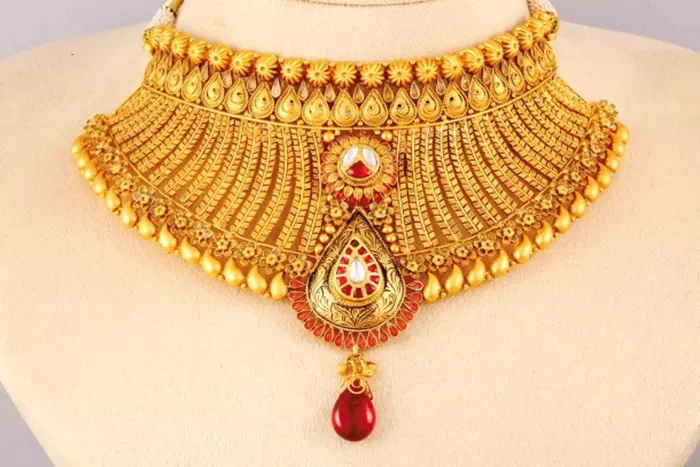As a jewelry designer, the Luster of pearls is one of the key factors determining their beauty and value. Freshwater pearls and saltwater pearls have certain differences in luster due to their different growth environments, cultivation methods and female species. This article will analyze in detail the differences in the luster performance of pearls in necklace design from aspects such as the formation mechanism of pearls, the influencing factors of luster, the actual wearing effect and market positioning, and explore how to select the appropriate type of pearls according to the needs.
Definition and Influencing Factors of Pearl Luster
The luster of pearls refers to their ability to reflect light on the surface. High-quality pearls should have bright, sharp and richly layered reflections, and even be able to reflect the clear Outlines of objects (i.e., the “mirror effect”). The core factors affecting glossiness include:
The thickness and structure of the nacre layer
Pearls are composed of layers of calcium carbonate (aragonite) and organic matter (shell protein). The more layers there are, the denser the structure and the stronger the luster.
Seawater pearls (such as Akoya, South Sea pearls, and Tahitian pearls) usually have thicker layers and more regular arrangements, with a sharper luster.
Freshwater pearls, due to seedless farming (or some with pits), may have a looser pearl layer structure and a softer luster.
Female shellfish species and growth environment
Marine mother-of-pearl oysters (such as Martenella, white clams, and black clams) live in a stable salinity environment and secrete nacre at a relatively slow but uniform rate.
Freshwater mother-of-pearl oysters (such as triangular sail mussels) grow in lakes or rivers where the environment fluctuates greatly, and the sedimentation rate of nacre is relatively fast but may be uneven.
Breeding cycle
The cultivation cycle of seawater pearls is relatively long (Akoya requires 1 to 2 years, while South Sea pearls need 2 to 4 years), and the pearl layers are thicker.
The cultivation cycle of freshwater pearls is relatively short (usually 6 months to 2 years), and some low-priced products may lack luster due to premature harvesting.
Comparison of Luster between Freshwater Pearls and Saltwater Pearls
The luster characteristics of seawater pearls
Akoya pearls: Renowned for their strong luster like a “small light bulb”, their surface presents a sharp mirror-like reflection, especially with a cold-toned iridescent (accompanying color) under white light.
Nanyang white beads/gold beads: They have a warm yet profound luster. Due to the thick layer of the beads, the reflection is more full and rich, making them suitable for luxurious style necklaces.
Tahitian black pearls: They have a lustrous sheen with a metallic texture. Common colors include peacock green and violet, creating a strong sense of layering.
Application in necklaces:
The high luster of seawater pearls makes them the top choice for classic single-row necklaces (such as pearl strings and pendant styles), especially in formal occasions where they can highlight an air of nobility.
The luster characteristics of freshwater pearls
Traditional nuclear-free freshwater beads: They have a relatively soft luster, mostly with diffuse reflection. A few high-quality beads can approach the luster of seawater beads.
Core Edison pearls (modern technology) : By implanting a round core to imitate the growth of seawater pearls, the luster is significantly enhanced. Some top-quality products even rival Akoya.
Shape diversity: The luster of freshwater beads with irregular shapes (Baroque, petal-shaped) presents a variety of effects due to the uneven surface, making them suitable for creative design.
Application in necklaces:
The luster of freshwater pearls is more suitable for daily wearing or layering styles, for example:
Irregular-shaped bead necklace: Creating a natural artistic feel with a soft luster.
Mixed design: When combined with amethyst, silver jewelry, etc., the understated luster of freshwater beads can prevent them from overshadowing the main content.
Manifestations of Luster Differences during actual Wearing
Contrast under lighting conditions
Under strong light: The reflection of seawater pearls is more concentrated, and clear light spots can be seen with the naked eye. Freshwater pearls present a uniform soft luster.
In low light: Seawater beads remain bright, while freshwater beads may appear “low-key and reserved”.
Changes from long-term wearing
Seawater pearls have a more stable structure and better lasting luster. If freshwater pearls are not properly maintained (in contact with chemicals or sweat), their surfaces are prone to corrosion, leading to a loss of luster.
Designer’s Perspective: How to Select Pearls Based on Luster?
Pursuing ultimate luster: Prioritize sea pearls (such as Akoya or South Sea pearls), which are suitable for classic and high-end jewelry designs.
With a limited budget but a similar effect needed: High-quality core-filled freshwater pearls (such as Edison pearls) are a cost-effective choice.
Creative design requirements: The soft luster and irregular shape of irregular-shaped freshwater pearls can add organic beauty to the work.
Market Trends and Consumer Perceptions
Seawater pearls: Due to their scarcity and high luster, they occupy the high-end market, and consumers often pay for the “luster premium”.
Freshwater pearls: Technological advancements (such as Edison pearls) are narrowing the gap, and younger consumers are more inclined towards their diversity and cost-effectiveness.
Conclusion
The difference in luster between freshwater pearls and saltwater pearls is obvious, but not absolute. Seawater pearls, with their sharp and mirror-like luster, have become the representative of traditional luxury necklaces, while freshwater pearls, with their soft and adaptable characteristics, occupy a unique position in contemporary designs. As a designer, the key lies in making rational use of the luster characteristics of the two types of pearls based on the style of the work, budget and wearing scenarios to maximize their aesthetic value.
Related topics:
Discover the Secrets Behind Pink Amethyst’s Unique Color
What Is the Symbolic Meaning of Amethyst in Antique Jewelry?
How to Distinguish Genuine Antique Amethyst Necklaces?


